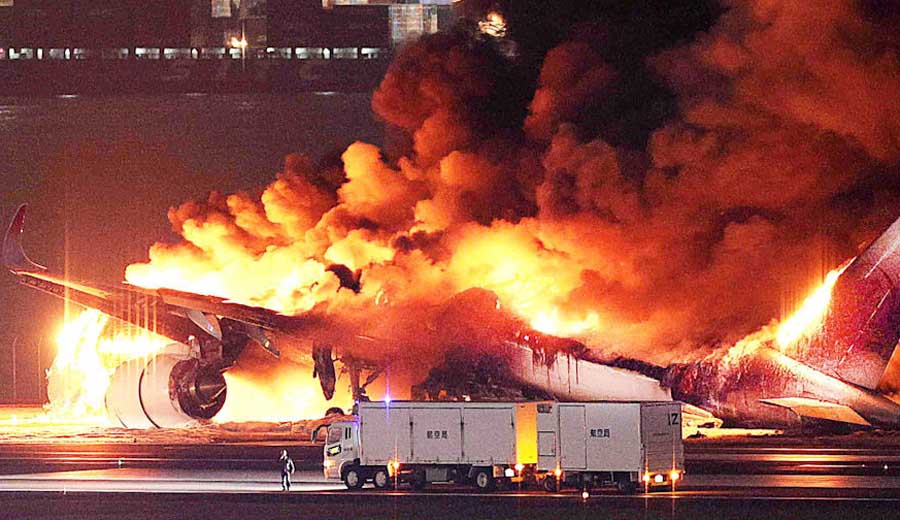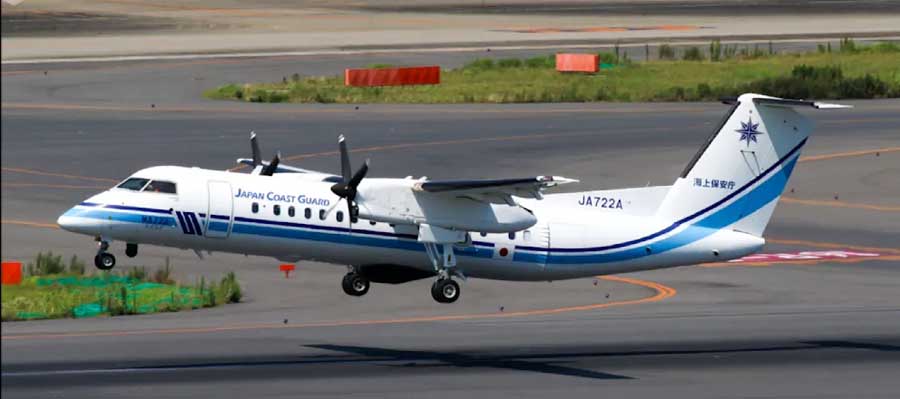DLNews Disaster:
In a remarkable aviation incident at Tokyo's airport, a story of miraculous survival and tragic loss unfolded, highlighting the resilience of modern aircraft and the devastating impact of unforeseen disasters.

On a seemingly routine day, an Airbus A350, operated by Japan Airlines (JAL), was set for landing at Haneda Airport. Flight JL516, after an 80-minute journey from New Chitose Airport in Sapporo, was cleared for landing on runway 34R at 17:47. Little did the crew and passengers know, a dire situation was about to unfold.
As the Airbus touched down, it collided with a Bombardier Dash-8 aircraft belonging to the Coast Guard, which was unexpectedly on the runway. The collision, occurring at a speed of approximately 222 km/h, resulted in a catastrophic fireball, as captured by airport cameras. What followed was a stark contrast between miraculous survival and tragic demise.

For air accident investigators, the condition of the wreckage is unusual because it is almost wholly burnt except for the parts of the wings and the two engines. There is virtually nothing left of the fuselage.
Miraculously, all 379 passengers aboard the Airbus A350 survived the inferno. This extraordinary escape can be attributed to rapid response, passenger discipline, and the aircraft's resilience. The ten flight attendants executed a flawless evacuation in about 90 seconds, a testament to their rigorous training and adherence to international safety protocols. The passengers, exemplifying discipline, followed instructions and left their hand luggage behind, ensuring a swift exit.
The Airbus A350, made primarily of modern materials like carbon-fiber-reinforced plastic, with only 4800 flight hours, remained structurally intact during the blaze. This resilience provided the essential time window for a successful evacuation.
In stark contrast, the Coast Guard's Bombardier Dash-8 suffered a tragic fate. Five crew members lost their lives in the accident, with only the captain surviving, albeit with severe injuries. The cause of the crash is speculated to involve human error, with reports suggesting that the Coast Guard plane did not have clearance to be on the runway.

Five passengers died in this Japanese Coast Guard Bombardier Dash-8 propeller plane; only the captain was able to escape seriously injured.
The investigation into this harrowing incident faces challenges, particularly regarding Airbus's flight recorders. These devices, designed to withstand high temperatures, might have been compromised due to the prolonged exposure to the fire, raising concerns about the feasibility of data retrieval.
This incident at Tokyo Airport is a powerful narrative of survival against the odds and the fragility of life. It underscores the unpredictable nature of air travel, where the potential for unforeseen calamities remains despite technological advancements and safety protocols. As investigations continue, this event will undoubtedly contribute to the ongoing efforts to enhance aviation safety, ensuring that the lessons learned from this day are not forgotten.

![]() \
\
Share this page with your family and friends.